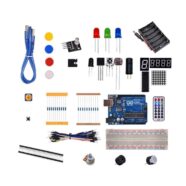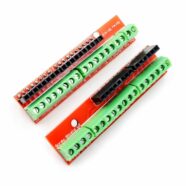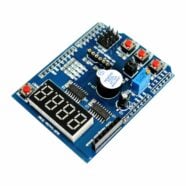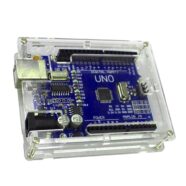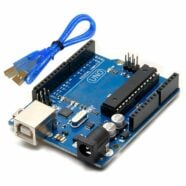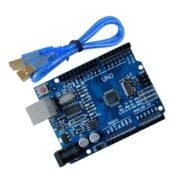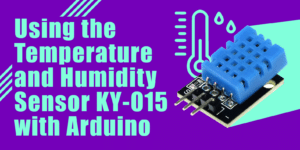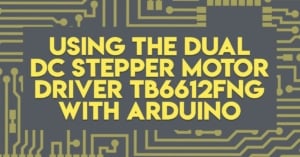Have you wondered what the Arduino UNO parts and functions are? How was it made to be an extremely versatile tool? See inside to find out.
Introduction
The first and original UNO has taken the world by storm. It’s so versatile that some companies use it as it is. The characteristics of this device make it easy to program and prototype. You’ll probably be left behind if you don’t have a UNO by now. In this guide you’ll be able to know the Arduino UNO parts and functions.
What's inside An UNO?

The Main Microcontroller to Program
The Arduino UNO has an ATMega328P processor as its main chip. The ATMega328P is the chip you do programming with. It’s an 8-bit microcontroller with built-in flash, SRAM, and EEPROM. Additionally, it has all the peripherals needed to make a decent microcontroller, such as Timers/Counters, a USART, an SPI, an I2C, a Comparator, and PWMs.
A USB-to-UART Chip
An ATMEGA16u2 or 8u2 for the older versions handles USB-to-UART to UART communications from PC to the UNO. It’s in itself a microcontroller programmed for this specific purpose. However, you may see UNO clones that replace this with an FTDI or a CH340 chip, making them cheaper. However, sometimes, you may need special drivers if you use the just-mentioned chips.
A USB Port
The USB port is the main means of communcation from the PC to the ATMEGA328P chip. This port can also supply the dev board’s power.
A DC Jack and VIN Port
The DC jack is the input for an external power supply higher than 5V (about 2V higher). This is almost the same point as VIN on the external connectors except that a blocking diode prevents VIN from going back to the DC jack port. The DC jack or VIN port supplies the input of the 5V LDO regulator.
A 5V Low-Dropout Regulator Chip
This 5V Low Dropout Regulator (LDO) supplies the main power of the ATMEGA328P. It’s sufficient enough to provide the current requirements of the said chip. This LDO also supplies the external power connectors labeled 5V. This LDO’s input comes from the input DC Jack or VIN.
A 3.3V Regulator Chip
The 3.3V LDO regulator supplies the 3.3V output to the external connectors. The 5V LDO or the USB port powers this 3.3V LDO.
An Off the Shelf Dual OP-AMP
The off-the-shelf dual OP-AMP is an LM358 chip. This chip has two purposes. One is to compare the power input voltages and decide which power source is best used by the dev board. Usually, VIN with a higher voltage takes precedence over VUSB. The other purpose is to act as a buffer on the serial clock pin in programming mode. Through this, you will see a yellow LED blink every time you program your UNO.
Protection Circuitry
A self-resettable fuse is inserted into the USB power source so that anything beyond a certain level can trigger the fuse to open, preventing board damage.
The Main Power Layout of the UNO
The datasheet of the UNO illustrates how power is applied to this module.
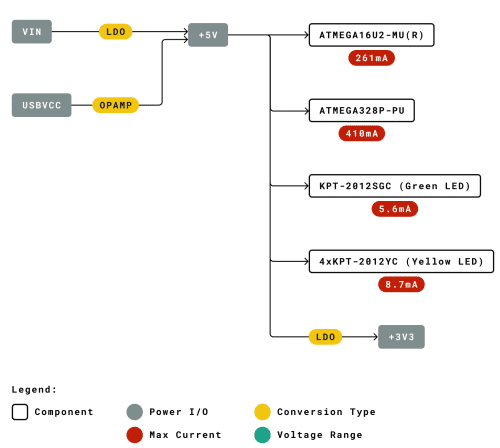
Conclusion
You’ve just learned the Arduino UNO parts and functions. Your Arduino UNO is a versatile dev board with several components inside. It’s an intelligent kit that can be powered from several sources. It can also translate communication from the PC to the main ATMEG328P chip through a USB-to-UART chip. These characteristics make it easy and ready to program without external devices.
SHOP THE PROJECT
-
Arduino Development Boards
Arduino UNO R3 MEGA328P Development Board with USB Cable – Compatible
$32.95 -
Arduino Development Boards
Arduino UNO CH340 MEGA328P Development Board with USB Cable – Compatible
$23.95Original price was: $23.95.$22.95Current price is: $22.95.

